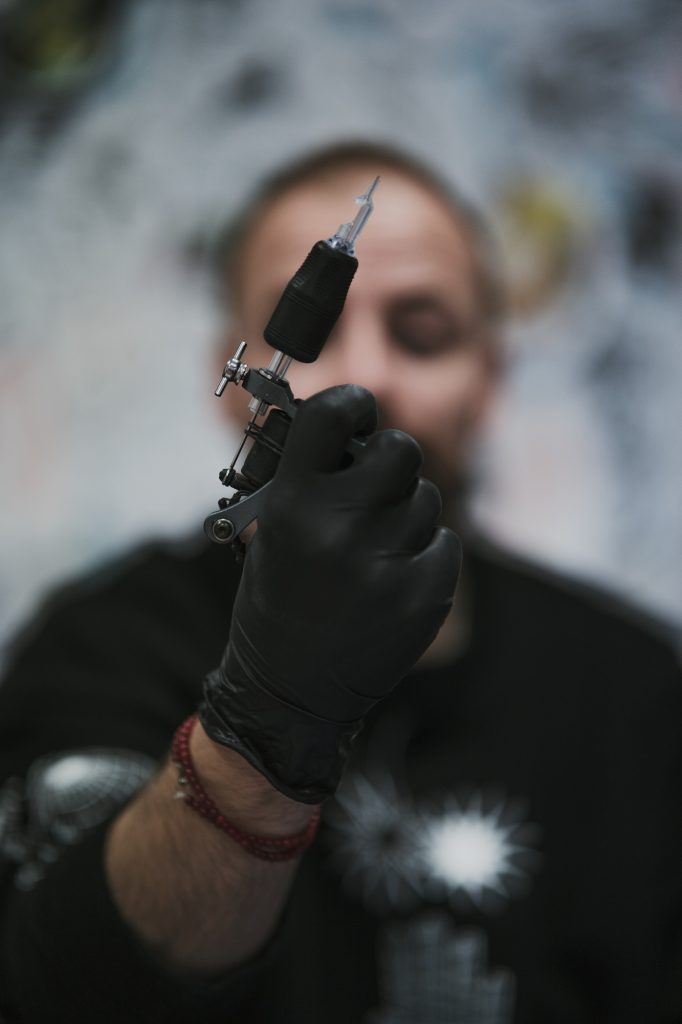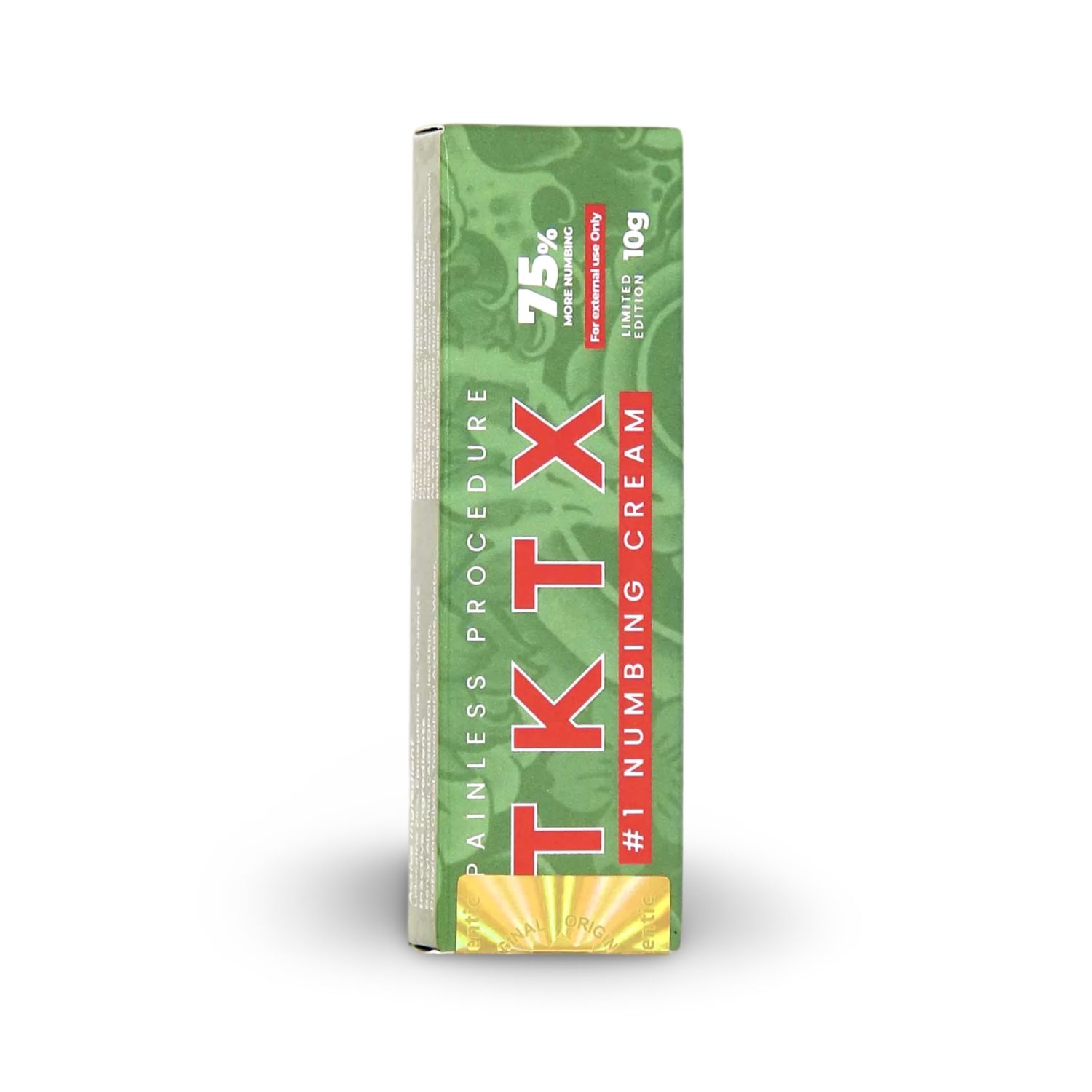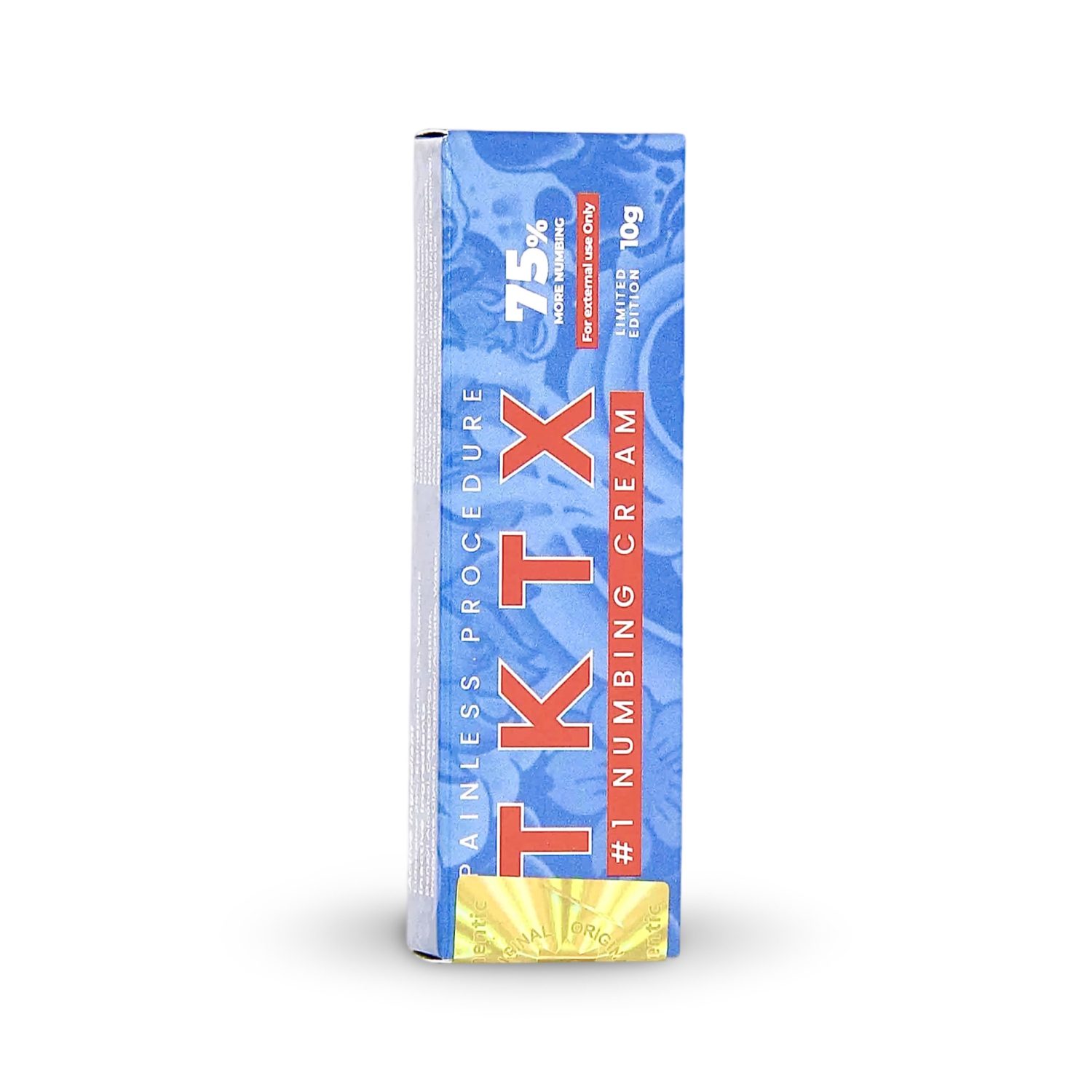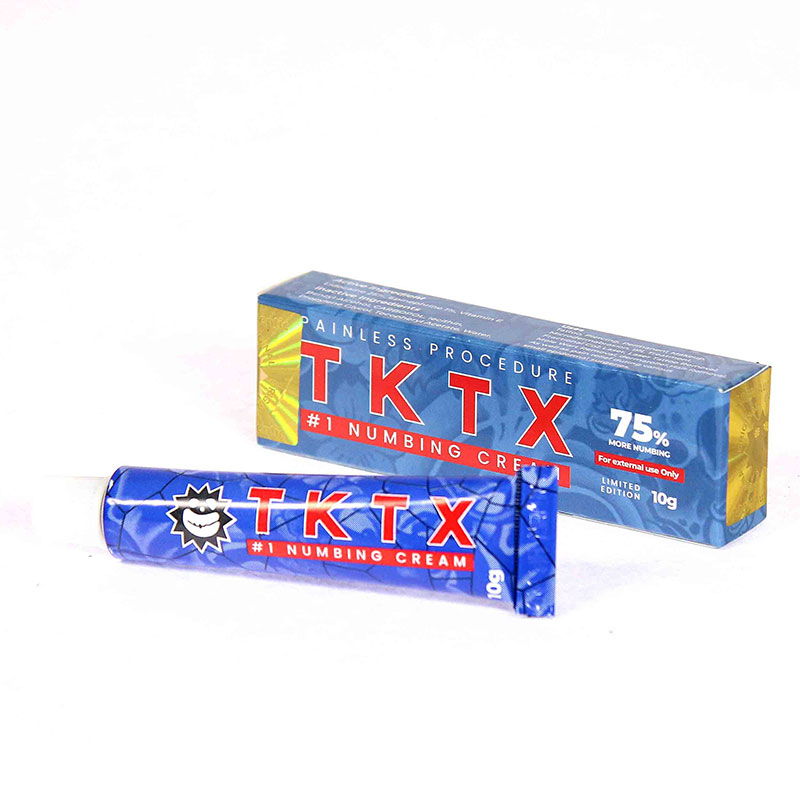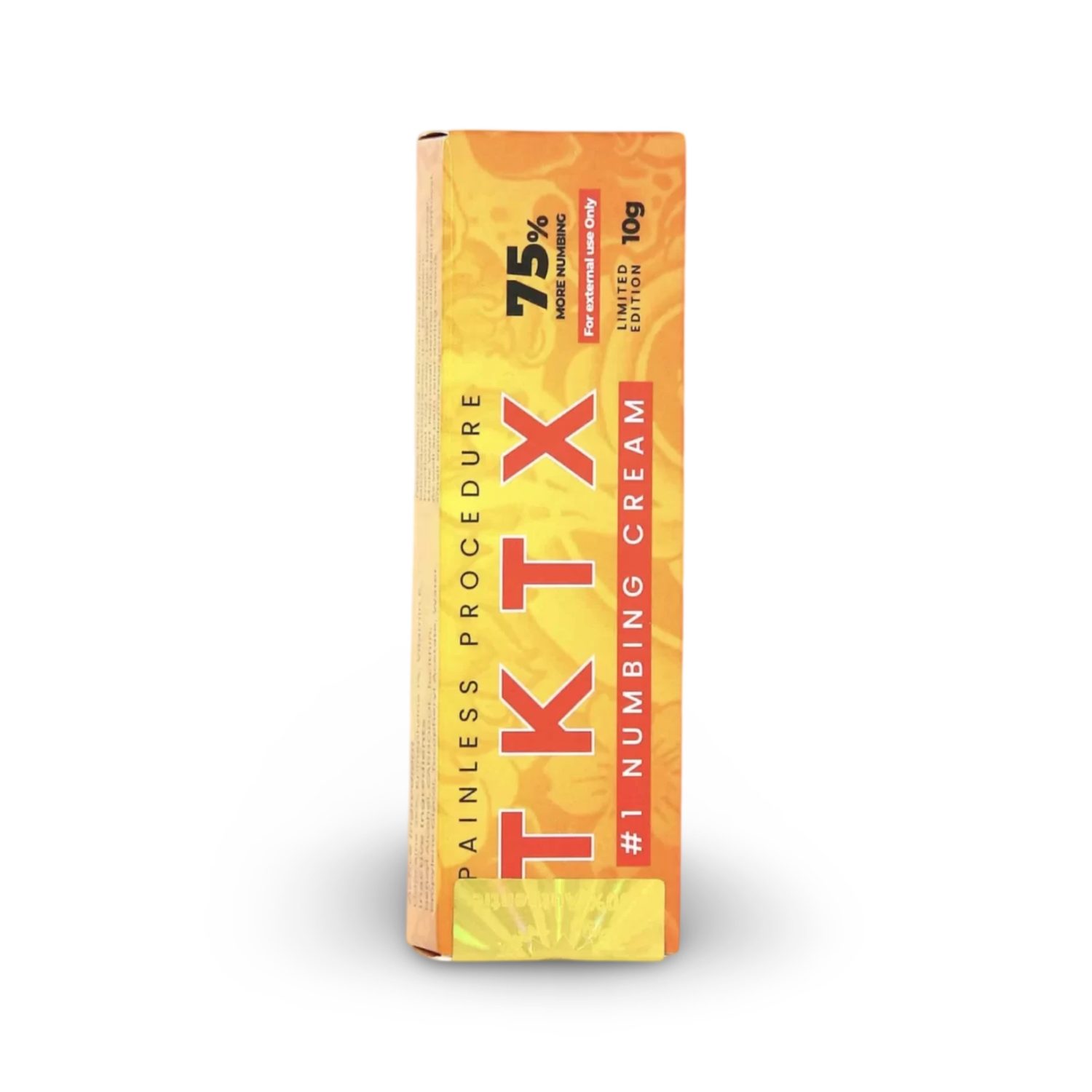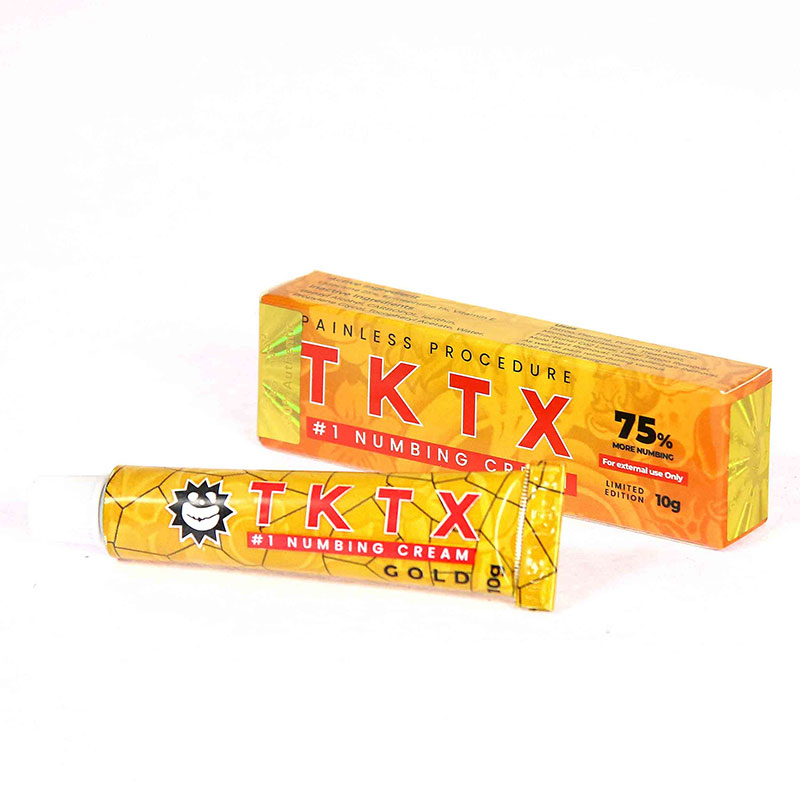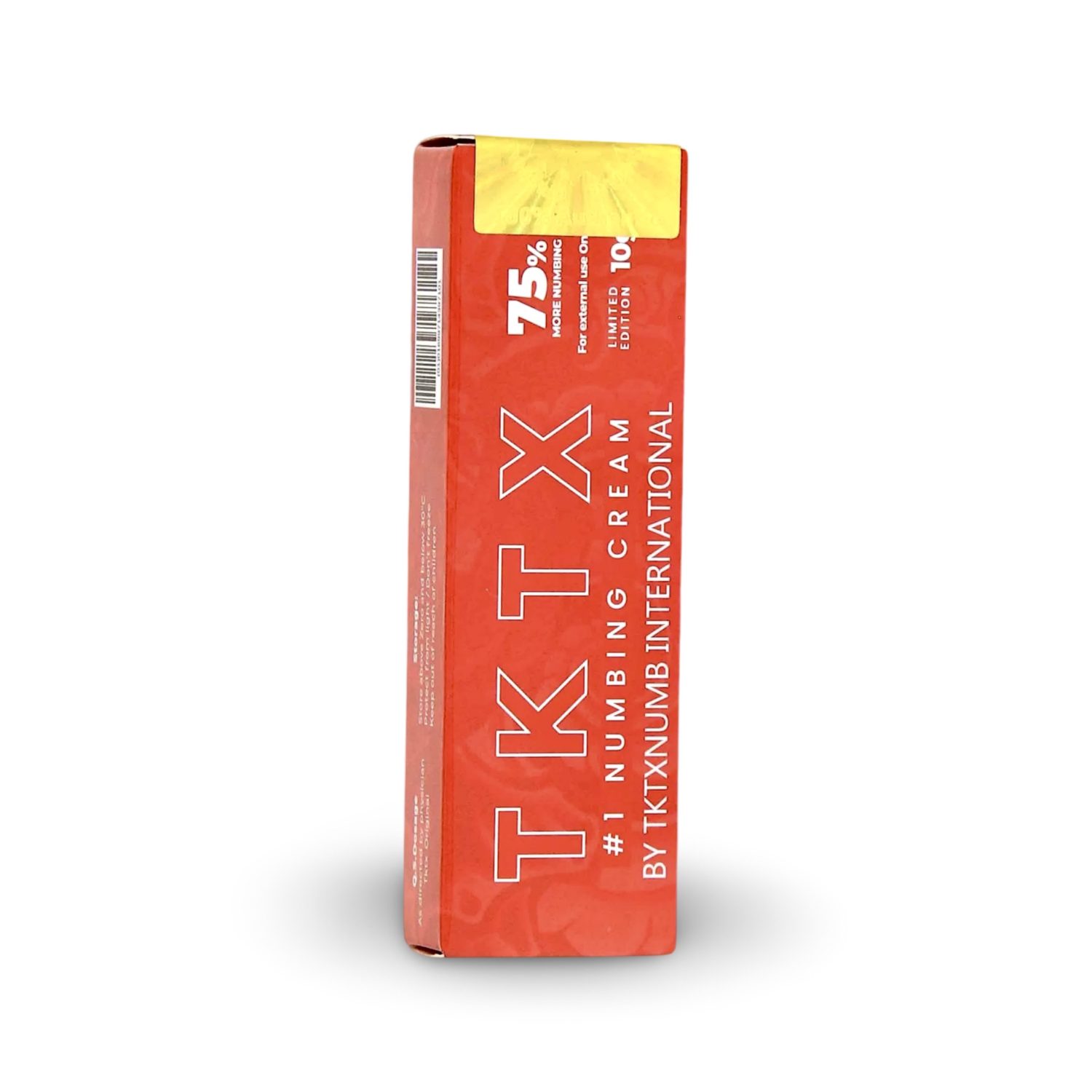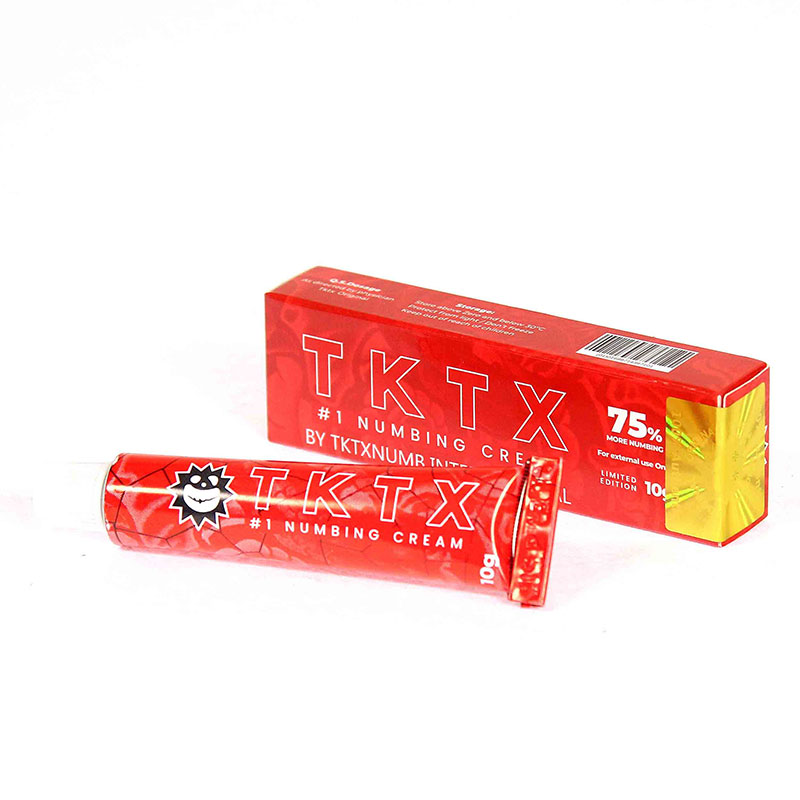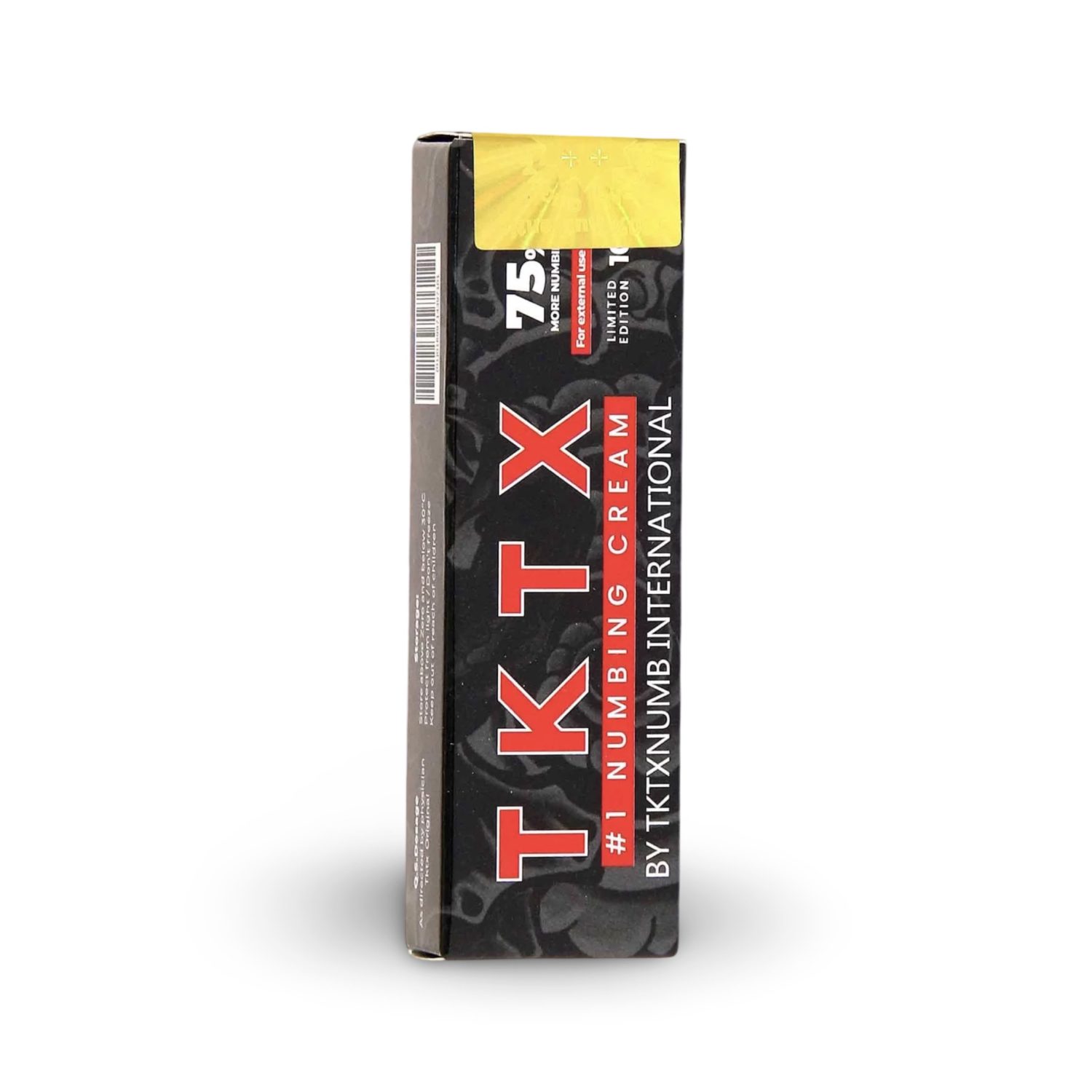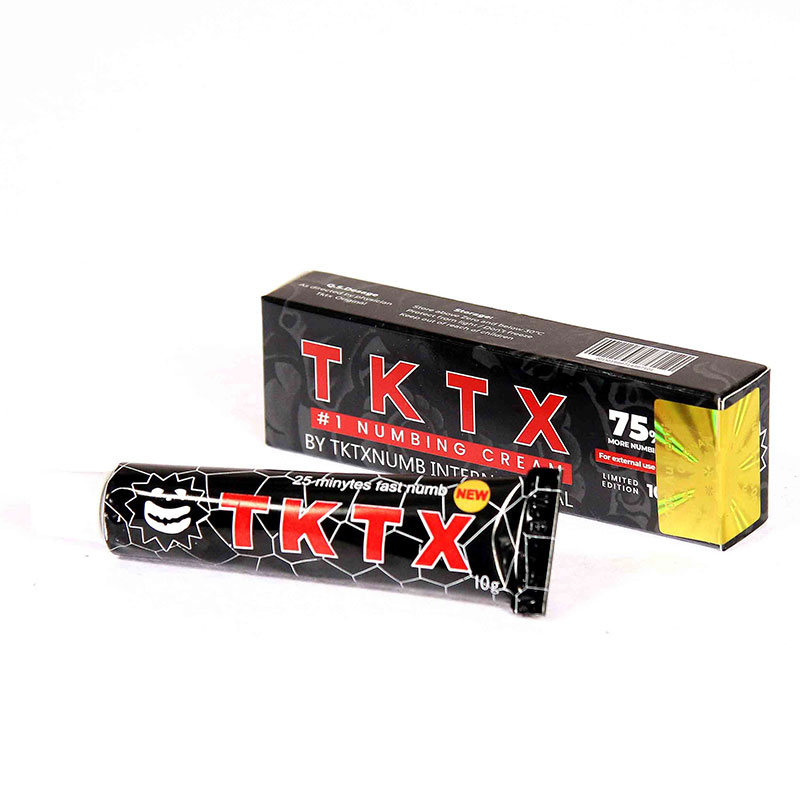Blog
Unlock pain-free tattoos: your ultimate guide to tattoo numbing cream 2023
The art of pain-free tattooing
Are you considering getting a tattoo but worried about the pain? Well, fear not! We have the ultimate guide to help you unlock pain-free tattoos. In this article, we will delve into the world of tattoo numbing cream and how it can make your tattooing experience considerably more comfortable.
We understand that getting a tattoo can be a daunting process, especially when it comes to dealing with the needle punctures on your skin. But with advancements in tattooing techniques and products, there are now effective solutions available to minimize discomfort. Managing your expectations is important as complete pain elimination may not be possible. However, with the right approach and the use of Tattoo Numbing Cream, you can significantly reduce the pain associated with getting inked.
Additionally, we will reveal the top 8 least painful spots to get a tattoo based on factors such as skin thickness and proximity to bones. So get ready to embrace your tattoo journey with confidence and pride – because pain-free tattoos are no longer just a dream!
An individual journey
Embarking on your own tattoo journey is an exciting and personal experience that will take you on a unique path of self-expression and discovery. When it comes to managing pain during the tattooing process, individual preferences play a crucial role.
Some people have higher pain tolerance than others, so it’s essential to consider what works best for you. Tattoo artists can also provide valuable recommendations based on their expertise and knowledge of different pain management strategies.
In addition to using Tattoo Numbing Cream, there are alternative options like topical anesthetics or distraction techniques that may help alleviate discomfort.
Psychological preparation is equally important—visualizing the end result and focusing on positive aspects can help ease any anxiety or fear associated with the procedure.
Remember, this journey is about embracing your unique expression, so finding the right balance between comfort and artistic vision is key.
Know what to expect
When it comes to getting a tattoo, understanding what to expect can help you better prepare for the experience. One important factor to consider is skin thickness. Thinner skin tends to be more sensitive and may result in increased pain during the tattooing process.
Additionally, it’s crucial to take into account nerve endings concentration. Areas with more nerves are generally more painful to tattoo.
Muscle and fat cushioning can also play a role in minimizing discomfort during a tattoo session. Areas with thicker layers of muscle and fat tend to be less painful due to the additional padding they provide. On the other hand, proximity to bones should be carefully considered, as tattoos on bony areas can be particularly uncomfortable.
Lastly, keep in mind that everyone’s pain tolerance is unique. What might feel unbearable for one person could be tolerable for another. It’s essential to listen to your body and communicate any discomfort or concerns with your tattoo artist throughout the process.
Skin thickness matters
Discover how the thickness of your skin plays a crucial role in determining the level of pain you might experience during a tattooing session. This knowledge allows you to make informed decisions and ensure a more comfortable and enjoyable experience.
Skin thickness varies from person to person and can significantly impact the sensation felt during tattooing. Thicker skin tends to have more cushioning, reducing the intensity of pain compared to thinner skin.
When considering tattoo placement, it’s important to take into account your individual pain tolerance and choose areas with thicker skin, such as the upper arms, thighs, or buttocks.
While Tattoo Numbing Cream can help alleviate some discomfort by numbing the area temporarily, it may not be as effective on thick-skinned individuals. It’s essential to explore alternative pain management methods and consult with your tattoo artist for guidance based on your unique situation.
Remember that tattoos hold cultural significance and are personal expressions of self. Understanding how your skin thickness affects pain can empower you in embracing the art form confidently.
Consider nerve endings
Feeling the gentle touch of a tattoo needle on your skin, you’ll be amazed by the intricate dance it performs with your nerve endings. Nerve endings sensitivity plays a crucial role in determining the level of pain experienced during a tattoo session.
The concentration of nerve endings can vary across different areas of the body, which affects how intensely you perceive the sensation. Understanding this can help inform your tattoo placement decisions based on your pain tolerance. Areas with fewer nerve endings, such as the upper arm or thigh, tend to be less painful than those with more nerve endings, like the ribcage or inner wrist.
While tattoo numbing cream can provide effective pain relief, it’s essential to explore other pain management techniques and alternative relief methods that work for you. Techniques like deep breathing exercises and distraction techniques can help divert your attention from the discomfort. Additionally, some people find relief through over-the-counter pain relievers or topical anesthetics approved by their tattoo artist.
Remember, everyone’s pain tolerance is unique, so what works for one person may not work for another. Take time to research and consult with professionals to ensure a comfortable and enjoyable tattooing experience tailored to your preferences and needs.
Muscle and fat to the rescue
Muscles and fat come to the rescue, providing cushioning and reducing discomfort during tattoo sessions. When it comes to minimizing pain during the tattooing process, alternative methods can be explored for effective pain management.
While Tattoo Numbing Cream is a popular choice, there are other anesthetic options available that can help numb the skin and alleviate some of the sensations of pain.
One important factor to consider is the role of fat cushioning in reducing discomfort. Areas of the body with a higher concentration of fat tend to be less painful for tattoos because the fat acts as a natural barrier between the needle and nerve endings. These areas include the thighs, buttocks, and upper arms.
Additionally, muscles play a crucial role in protecting sensitive areas during tattoo sessions. Muscular regions offer more resistance against needle penetration, making them less prone to intense pain. Examples include the calves, biceps, and back muscles.
By choosing tattoo locations with adequate muscle and fat cushioning, individuals can enhance their overall comfort during the tattooing process. It’s important to consult with a professional tattoo artist who can provide guidance on suitable body areas based on personal preferences and pain tolerance levels.
Watch out for bones
When choosing a location for your tattoo, beware of the bony areas. They tend to be more painful due to the proximity of nerve endings. The density and structure of bones can amplify sensations of discomfort during the tattooing process.
Tattooing over bones can cause increased pain levels. The needle comes into contact with nerve endings that are concentrated in these areas. It is crucial to consider bone pain management techniques if you decide to get a tattoo in these locations.
Tattooing over bones may also present challenges and potential complications. The uneven surface and limited skin cushioning around bony areas can make it more difficult for the ink to be evenly distributed, leading to an inconsistent or distorted design. Additionally, healing may take longer in these areas due to reduced blood flow.
To minimize pain and ensure optimal results, communicate openly with your tattoo artist about your concerns regarding tattooing over bones. They can provide guidance on techniques such as adjusting needle depth or using numbing creams specifically formulated for bone-related discomfort. Remember, proper planning and preparation will help you navigate this potentially more painful aspect of getting a tattoo.
Your unique pain tolerance
Consider embracing the unique experience of pain during tattooing, as it can serve as a reminder of your strength and resilience. Pain management techniques are essential in ensuring a more comfortable tattooing experience.
Everyone’s personal pain thresholds differ, so it’s crucial to communicate with your tattoo artist about your tolerance level. They can adjust their technique or recommend alternative pain relief methods like Tattoo Numbing Cream to help alleviate discomfort.
Mental preparation for the tattooing process is also important; visualizing the end result and focusing on positive thoughts can help distract from any pain sensations.
Remember that while tattoos may involve some degree of pain, they are ultimately a meaningful expression of self. Embrace the process and trust in your ability to endure and create something beautiful on your skin.
Revealing the top 8 least painful tattoo spots
While complete pain elimination may not be feasible, some body parts are generally less sensitive and more comfortable for tattooing. Let’s explore the top least painful places to get a tattoo:
- Upper Arm: Embrace the Comfort
The upper arm, including the bicep and tricep area, is an excellent choice for a relatively painless tattoo experience. The thick layer of muscle in this region helps cushion the needle’s impact, reducing discomfort significantly. This location is popular among tattoo enthusiasts for its ability to accommodate various designs and styles without causing excessive pain. - Thigh: The Canvas of Ease
The thigh is another highly favored spot for painless tattoos. With a good amount of flesh and muscle, tattooing the thigh is often less painful and allows for larger and more intricate designs. This area is particularly suitable for individuals seeking elaborate tattoos or those looking to minimize pain during their tattooing journey. - Buttocks: Unexpectedly Comfortable
The buttocks offer a surprisingly low-pain tattooing experience. The ample muscle and fat in this area help alleviate discomfort, making it a great choice for those seeking a less sensitive location. Tattooing on the buttocks allows for a unique and personal tattoo experience with minimal pain. - Calves: Comfortably Tolerable
The calf muscles are also relatively painless areas for tattoos. The well-developed muscle tissue offers a comfortable canvas for your chosen design. Tattooing the calves is a popular choice for individuals looking for a balance between aesthetics and pain tolerance. - Shoulders: Shouldering the Ease
The shoulder area, especially the outer part, is known for being less painful during tattooing. This location allows for various design options and is favored by many tattoo enthusiasts. Tattooing on the shoulder is a great choice for those seeking a painless and visually appealing placement for their tattoos. - Upper Back: A Zone of Comfort
The upper back, between the shoulder blades, is an excellent spot for those looking to minimize pain. It provides a substantial surface area for intricate tattoos while offering a comfortable experience. Tattooing on the upper back is a popular option for individuals seeking larger and more detailed designs without compromising on comfort. - Forearm: Balancing Pain and Style
While the forearm is closer to the bone than some other areas, it can still be a relatively painless spot for tattoos. The outer forearm, in particular, has more muscle, reducing discomfort. Tattooing on the forearm is ideal for those seeking a balance between style and pain management. - Outer Hips: Comfortably Stylish
Tattooing the outer hips is a great option for a less painful experience. The hips have a sufficient amount of flesh, making it easier on the pain front. Tattooing on the hips allows for stylish and unique placements that won’t compromise your comfort.
The role of tattoo Numbing cream in minimizing tattoo pain
Are you looking for ways to minimize the pain during your tattoo session? Tattoo Numbing Cream can be your secret weapon.
This cream offers numerous benefits for reducing tattoo pain, allowing you to have a more comfortable experience. By using Tattoo Numbing Cream, you can enhance your tattoo sessions and make the process much more tolerable.
Additionally, combining proper technique with the use of this cream can further improve your tattooing journey.
Don’t let pain hold you back from getting the tattoo of your dreams – try Tattoo Numbing Cream and enjoy a less painful experience.
Benefits of tattoo Numbing cream for tattoo pain reduction
To truly appreciate the benefits of tattoo numbing cream for reducing tattoo pain, you’ll need to understand how this revolutionary product works.
Efficacy studies have shown that tattoo numbing cream is indeed effective in minimizing pain during the tattooing process. Compared to other pain management methods such as ice or topical anesthetics, numbing cream offers a more comprehensive and long-lasting solution.
When applying the cream, it’s crucial to use proper techniques to ensure even coverage and maximum effectiveness.
Tattoo artists also find value in numbing cream as it allows them to work more comfortably and efficiently, resulting in better quality tattoos.
As for concerns about long-term effects on tattoo healing, research is ongoing, but preliminary findings suggest that when used correctly, tattoo numbing cream does not negatively impact the healing process.
With all these advantages, there’s no doubt that tattoo numbing cream can greatly enhance your tattooing experience by minimizing pain and discomfort.
Using tattoo Numbing cream for your tattoo sessions
When considering incorporating tattoo numbing cream into your tattoo sessions, it’s important to understand the proper application techniques and dosage to ensure optimal pain relief without compromising the quality of your tattoo.
Numbing creams can be highly effective in reducing tattoo pain, but it’s crucial to follow the instructions provided by the manufacturer or your tattoo artist. Apply a thin layer of cream to clean, dry skin about an hour before your appointment and cover it with plastic wrap to enhance absorption.
Keep in mind that numbing creams may have potential side effects like skin irritation or allergic reactions, so it’s essential to do a patch test beforehand. The duration of the numbing effect can vary depending on factors such as individual metabolism and the specific product used.
If you prefer not to use numbing creams, alternatives like topical anesthetics or distraction techniques can also provide some pain relief during your tattoo session.
Tattoo aftercare with tattoo Numbing cream
Discover the secret to preserving your tattoo’s vibrant colors and ensuring a smooth healing process with the help of tattoo numbing cream.
After getting your tattoo, proper aftercare is essential for optimal healing and long-lasting results. While tattoo numbing cream effectively reduces pain during the tattooing process, it also plays a crucial role in post-tattoo care.
Firstly, keep the area clean by washing it gently with mild soap and lukewarm water. Avoid scrubbing or soaking the tattoo.
Apply a thin layer of tattoo numbing cream to alleviate any residual discomfort and promote faster healing. Remember to moisturize regularly using fragrance-free lotions or ointments to prevent dryness and itching.
Additionally, avoid exposing your fresh ink to direct sunlight or swimming pools until fully healed. If you prefer alternative pain management methods, consider ice packs or over-the-counter pain relievers (if approved by your tattoo artist).
Lastly, choose your tattoo placement wisely, considering factors like skin thickness and proximity to bones to minimize potential discomfort during healing.
Combining technique and tattoo numbing cream
To create a more comfortable tattooing experience, it is important to combine expert technique with the power of numbing cream.
When it comes to minimizing pain during the tattooing process, the skill and expertise of your tattoo artist play a crucial role. Experienced artists employ various tattooing techniques that can help reduce discomfort. These techniques include using a lighter hand pressure or working in shorter sessions.
In addition to technique, many artists recommend the use of Tattoo Numbing Cream to further enhance pain management. The effectiveness of numbing creams may vary from person to person, but countless customer testimonials attest to their ability to significantly minimize pain and discomfort during tattoos.
By following the advice and recommendations of skilled artists and leveraging the benefits of numbing cream, you can create a truly enjoyable and pain-free tattooing experience for yourself.
Embrace your tattoo journey with realistic expectations
Get ready to embark on your tattoo journey with realistic expectations. It’s important to understand what to expect, so you can fully embrace the art of pain-free tattooing.
When getting a tattoo, it’s important to have realistic expectations about the process and outcome. While Tattoo Numbing Cream can significantly reduce pain during the session, complete elimination of all sensations may not be feasible.
One aspect to consider is tattoo healing. After getting inked, your skin needs time to recover and for the tattoo to settle. It’s normal for tattoos to go through various stages of healing, including scabbing, peeling, and itching. Understanding this process will help you avoid unnecessary worry or disappointment.
Effective pain management techniques play a crucial role in enhancing your tattoo experience. Discussing pain tolerance with your tattoo artist is essential as they can adjust their technique accordingly. Additionally, taking breaks during longer sessions and practicing deep breathing exercises can help manage discomfort.
When choosing a design, consider its size and complexity as they can influence pain levels. Smaller tattoos tend to be less painful than larger ones due to reduced needle time. Similarly, simple designs require fewer repetitive motions compared to intricate ones.
Clear communication with your tattoo artist is key throughout the whole process. Share any concerns or anxieties you may have so they can address them appropriately. A skilled and experienced artist will guide you through each step and ensure you feel comfortable.
By setting realistic expectations about the healing process, utilizing effective pain management techniques like Tattoo Numbing Cream, considering design factors that may affect discomfort levels, and maintaining open communication with your artist; you’ll be better prepared for a truly enjoyable and pain-free tattoo journey!
Our products
Frequently Asked Questions – about this post
How long does the numbing effect of tattoo numbing cream last?
The duration of the numbing effect of tattoo numbing cream can vary depending on several factors. To maximize its effectiveness, follow the instructions provided in the packaging. Different colours and percentages may have varying durations, with some lasting longer than others. Additionally, the placement of your tattoo can influence how long the numbing effect lasts, as areas with more nerve endings may require reapplication. Factors such as sweating or excessive movement during the tattoo session can also shorten the numbing effect.
Are there any side effects or risks associated with using tattoo numbing cream?
Using tattoo numbing cream does come with some risks and potential side effects. Allergies to the ingredients in the cream can occur, so it’s important to do a patch test before applying it to a larger area. Precautions should be taken, such as following the instructions carefully and not using too much cream. While tattoo numbing cream can be effective in reducing pain, there are alternative methods like topical anesthetics or nerve-blocking injections that you can discuss with your tattoo artist or healthcare professional.
Can tattoo numbing cream be used for all types of tattoos, including color tattoos and cover-ups?
Yes, tattoo numbing cream can be used for all types of tattoos, including color tattoos and cover-ups. The efficacy of the numbing cream may vary depending on the size of the tattoo. Smaller tattoos may require less cream compared to larger ones. There is no significant difference in effectiveness between black and colored tattoos when using numbing cream. Numbing cream can also be used for touch-up sessions to minimize discomfort. It’s important to note that while numbing cream can reduce pain during the tattooing process, it does not impact the healing process or its duration. Numbing cream is not typically used for tattoo removal procedures as they involve different techniques and processes.
Is tattoo numbing cream safe to use on all skin types, including sensitive skin?
Yes, tattoo numbing Cream is generally safe to use on all skin types, including sensitive skin. However, it’s important to take precautions and consider alternative numbing methods for sensitive skin. When using tattoo numbing cream on sensitive skin, it’s recommended to do a patch test first to ensure there are no adverse reactions. Look for tattoo numbing creams specifically formulated for sensitive skin and choose one that contains natural ingredients. Reading testimonials from people with sensitive skin who have used tattoo numbing cream can also help in selecting the right product for you.
BUY TATTOO CREAM?
After years of experience with these creams, we have the expertise to offer you a carefree tattoo session. Our webshop offers high-quality products at the best prices and we want to make sure that our customers have both the best products and the best experience when shopping with us. Whether you want a small tattoo or an extensive sleeve, our cream is here to help you get a tattoo. We ensure fast delivery and customer service that is always there to answer any questions or concerns you may have.

